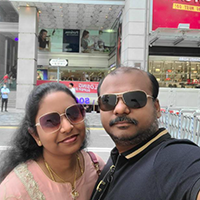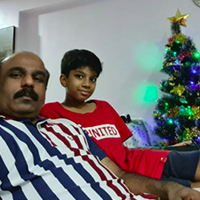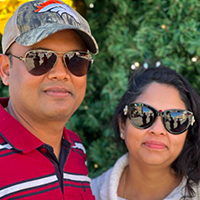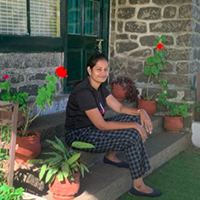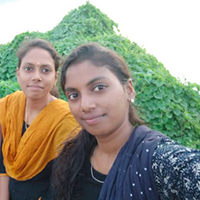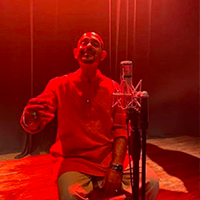What “Online” Gets You That a Studio Doesn’t
Audio engineering is where craft meets decisions. From placing a microphone to delivering a master that translates on phones, cars, clubs, and streaming platforms, engineering is the system behind the sound. With the right online course, you don’t just copy settings—you learn why things work, so you can deliver under any deadline, on any gear, for any client.
Why online? Simple: you practice on your own setup, not a lab you’ll never see again. You save commute time and pour it into practice. You get access to global instructors and niche topics your local scene may not cover. And you build workflow templates right inside your DAW so you can work faster tomorrow than you did today.
We’ll map the full stack of what matters—signal flow, gain staging, microphones and polar patterns, room acoustics, editing and cleanup, EQ and compression, spatial mixing, automation, mastering for streaming, audio over IP, and real-world deliverables. We’ll back it with reputable sources and give you a roadmap that produces a tangible portfolio.
What you’ll leave with: a working engineer’s toolbox, a repeatable session workflow, two to three polished projects for your reel, and the confidence to take on paid work or level up your own releases.
What Is Audio Engineering (and Why It Pays to Learn It)
Audio engineers handle the technical side of recording, mixing, and live sound—placing microphones, setting preamp levels, capturing performances, and sculpting tone in the box or on consoles. On the job, you balance sources with EQ and dynamics, manage phase, create depth with space/time effects, and deliver mixes or masters that hold up on every playback system.
Career snapshot: US labor data groups many roles under broadcast, sound, and video technicians. Median pay was $56,600 in May 2024, with 3% growth projected for 2023–2033—about as fast as the average. That’s ~12,900 openings annually (growth + replacement). It’s not hype; it’s steady, practical work across music, post, live, and corporate AV.
Takeaway: Learn engineering to stop guessing. You’ll build choices you can defend under pressure—because you understand the “why,” not just the “what.” Add consistent output and a clean portfolio, and you have a path into paid projects.
Who This Online Course Is For
- Independent artists & producers who need release-ready mixes without outsourcing every step.
- Aspiring engineers aiming for studio, post, live, or podcast work.
- Content creators & podcasters who must clean dialogue, reduce noise, and hit loudness targets.
- Career-switchers who want a practical, project-led path rather than abstract theory.
- Students with small rooms who need real acoustics help, not just “buy more gear.”
Takeaway: If you need reliable results on real deadlines, you belong here—no “gold-plated” gear required.
Core Skills You’ll Master
Signal Flow & Gain Staging
Signal flow is the path audio takes from source to output. If you can trace it, you can fix anything. We’ll drill input → preamp → A/D → DAW tracks → inserts → buses → master → monitors. Proper gain staging optimizes headroom, keeps noise low, and prevents ugly intersample peaks later.
Practical: You’ll build a default DAW template with input trims, metering on groups, and calibrated monitor levels. You’ll learn when to gain stage at the clip, at the plugin, and at the bus—and how to keep your master peaking safely even before mastering.
Takeaway: When signal flow is clear, troubleshooting is fast and mixes stay clean.
3.2 Microphones & Polar Patterns
You’ll learn the sound and rejection patterns of cardioid, supercardioid, hypercardioid, omni, and figure-8. Figure-8 gives maximum side rejection (great for mid-side or Blumlein); cardioid is your default for isolation; omni is natural in good rooms. We’ll match capsule types (dynamic, condenser, ribbon) to sources and SPL.
Practical: You’ll place mics using angle, distance, and the “rule of thirds” for off-axis tone; you’ll check phase with a mono button; and you’ll compare single-mic vs. spaced and coincident pairs for acoustic instruments.
Takeaway: Pattern choice and placement solve tone and bleed before EQ ever opens.
Room Acoustics for Small Studios
Your room is part of your signal chain. We’ll treat first reflection points (side walls and ceiling) to reduce comb filtering, and we’ll use bass traps in corners to manage low-end build-up. You’ll learn the mirror trick to locate reflections and why air gaps behind absorbers increase effectiveness.
Practical: We’ll design a minimal, affordable treatment plan and verify with reference tracks and free measurement tools.
Takeaway: Tame the room and your EQ decisions get 10x easier.
Editing, Cleanup & Dialogue Repair
You’ll tighten timing, comp takes, remove clicks, de-ess harsh sibilance, and gate/expand intelligently. For podcasts and video, you’ll clean noise, plosives, and HVAC rumble, then prep stems for editors. The goal: fast editorial that doesn’t damage tone.
Takeaway: Clean edits + calibrated levels = better mixes in less time.
EQ, Compression & Tone Shaping
We’ll make EQ choices with intent (surgical cuts vs. broad tone moves), shape transients with compression (attack/release for punch or glue), and control low-end with sidechain and multiband when necessary. You’ll learn how to listen for masking and when saturation outperforms EQ for density.
Takeaway: Tone comes from purposeful moves, not endless tweaking.
Space, Depth & Translation
Reverbs (plate, room, hall), delays (slap, ping-pong), and psychoacoustics create depth and width. Automation brings life—rides on vocals, crescendos into hooks, and “ducking” for clarity. You’ll check mixes on headphones, small speakers, and phones to ensure translation.
Takeaway: Space supports the song—if you can feel the depth without noticing the effect, you’re close.
Mastering for Streaming & Broadcast Loudness
We’ll master to platform targets and protect transients with true peak limits. For broadcast Europe uses EBU R128 with a −23 LUFS target; ATSC A/85 in the US is −24 LKFS. Streaming platforms differ; Spotify defaults to −14 LUFS normalization under ITU-R BS.1770, with user-selectable “quiet” and “loud” modes. Understanding LUFS/LKFS and true peak keeps your release competitive without distortion.
We’ll also clarify measurement: LUFS integrates loudness over time; gating prevents silence from skewing the number.
Takeaway: Master to context. A playlist target differs from broadcast; know both and deliver properly.
Digital Audio Fundamentals: Sample Rate & Bit Depth
Sample rate defines the highest frequency you can capture (Nyquist), while bit depth sets dynamic range/noise floor. In practice, 44.1 or 48 kHz with 24-bit depth is a safe, professional baseline for music and podcasts; higher rates can help in sound design or heavy processing chains.
Takeaway: Choose the rate for the job; bit depth buys headroom and cleaner processing.
Audio-over-IP & Studio Networking (AES67)
Modern facilities use AES67 to move multichannel audio over IP networks between otherwise incompatible systems (e.g., Dante, Livewire, Q-LAN, RAVENNA). Knowing basics of sync, clocking, and session description makes you future-proof in live, broadcast, and multi-room studios.
Takeaway: Networking is audio’s present. Learn it now and expand your job options.
Tools You Need (and What You Don’t)
- DAW: Use what you have—Pro Tools, Logic, Reaper, Studio One, Ableton, Cubase. Market share shifts; workflows matter more than logos. Recent surveys show Pro Tools leading among pros while others grow for creators—learn the fundamentals and you can switch DAWs easily.
- Interface & monitors: Clean two-channel in/out and honest nearfields.
- Headphones: One open-back for mixing checks, one closed-back for tracking.
- Two mics: A dynamic (e.g., cardioid) and a condenser cover most sources.
- Treatment: Reflection panels + bass traps. Spend here before boutique plugins.
- Plugins: Stock tools can take you far. Add specialty processors (de-noise, limiter) when you know why you need them.
- Metering: LUFS/TP meter for mastering and delivery checks. (EBU mode is helpful across many contexts.)
Takeaway: Prioritize room, monitoring, and metering over brand-new toys.
The Learning Model: How Online Training Works Best
- Live feedback beats static videos. You’ll submit weekly clips and get surgical corrections.
- Short, daily practice. 20–40 minutes on targeted drills outperforms weekend marathons.
- Project-based. Each module ends with a deliverable—demo single, podcast episode, trailer cue.
- Templates. You’ll build session templates so you can start fast and finish on time.
- Portfolio-first. Every assignment becomes reel material.
Takeaway: Designed right, online training gives you more reps, faster corrections, and assets you can show clients.
Industry, Jobs & DAWs: Reality Check with Data
- Jobs: The BLS projects steady growth with reliable openings in broadcast/post/live roles. Median wages for sound/broadcast/video technicians were $56.6k (May 2024), with the top decile over $104k. State markets vary; check your region.
- Occupation profile: “Sound Engineering Technicians” appears across information and entertainment industries, per ONET/BLS aggregation.
- DAW market: The DAW market itself is growing (estimated global DAW software market ~USD 3.46–3.5B in 2024, projected to ~USD 7B+ by 2033). Translation: more creators, more content, more need for competent engineers.
- Platform loudness: Streaming normalization is the norm; you need to master to context (e.g., Spotify −14 LUFS default).
Takeaway: The work is there. Bring skills + a clean reel and you’re in the conversation.
Outline of Online Audio Engineering Roadmap
Weeks 1–2: Signal Flow, Gain Staging, Monitoring
- Map your entire chain; calibrate levels; set a default DAW template.
- Build a troubleshooting checklist (no
sound? trace the path).
Outcome: Clean headroom, predictable meters, fewer surprises.
Weeks 3–4: Microphones & Room
- Cardioid vs. figure-8 placements; mid-side experiments.
- Treat first reflections; place corner
traps; verify with reference tracks.
Outcome: Better capture day one; mixes that translate.
Weeks 5–6: Editing & Cleanup
- Comping, timing, de-noise, de-ess, click removal.
- Dialogue chain for podcasts and
video.
Outcome: Faster edits, cleaner tone, less repair during mix.
Weeks 7–8: EQ, Compression, Space
- Broad vs. surgical EQ; multiband where necessary.
- Attack/release to shape punch; serial vs parallel compression.
- Reverb/delay for depth; tasteful
saturation for density.
Outcome: Intentional tone, depth you can feel.
Weeks 9–10: Automation & Translation
- Vocal rides, scene-based automation, FX throws.
- Translation checks: earbuds, phone, car,
small speakers.
Outcome: Energetic, controlled mixes that hold up everywhere.
Weeks 11–12: Mastering & Delivery
- LUFS/TP targets for streaming; broadcast targets for post.
- QC: headroom, intersample peaks, file formats, metadata.
- Build your before/after reel; publish a
mini-EP or podcast pilot.
Outcome: Two to three portfolio-ready projects with documented process. - Bedroom Vocalist → Release-Ready Single: Started with harsh, sibilant takes in a reflective room. After cardioid placement tweaks, pop filtering, and first-reflection panels, sibilance dropped; a gentle de-esser and 2–3 dB wide-Q cuts above 5 kHz finished the job. Translation checks confirmed clarity on phone speakers. (Techs & room treatment principles as above.)
- Dialogue-Heavy Podcast: HVAC rumble and plosives made it fatiguing. High-pass filtering, broadband de-noise, spectral repair on clicks, and LUFS-targeted leveling delivered a smooth, compliant show. (Normalization = consistent loudness for listeners.)
- Indie Pop Master: Original mix pushed too hot; intersample peaks clipped on streaming. Re-limited to protect true peaks, re-balanced low-end, and delivered at competitive integrated LUFS. Result: louder perception without distortion. (R128/BS.1770 metering informed choices.)
- Chasing presets instead of listening for problems and goals.
- Ignoring the room—spending on mics/plugins while mixing in reflections.
- Over-compressing to sound “loud” before mastering.
- Skipping gain staging and wondering why everything distorts later.
- Mastering without a loudness reference—hitting platforms too hard or too soft.
- Trace the path (source → monitors).
- Keep peaks controlled and consistent at each stage.
- Build a “no sound?” flowchart.
- Choose pattern for isolation/ambience; check phase in mono.
- Treat first reflections; trap corners for bass.
- Remove clicks/pops before EQ/comp.
- Dialogue: HPF, de-ess, noise reduction, consistency.
- Broad EQ for tone, narrow for problems.
- Compress for envelope control; automate for life.
- Use LUFS/TP meters; protect headroom.
- Streaming (e.g., −14 LUFS Spotify), broadcast (−23 LUFS EBU R128 / −24 LKFS ATSC A/85).
- Learn AoIP basics (AES67) for modern workflows.
Takeaway: In 12 focused weeks you go from scattered to systematized—with proof of progress you can show.
Case Studies & “Before/After” Portfolio Wins
Takeaway: Document your chain, show the delta (before/after), and you’ll have client-ready proof.
Common Mistakes and How to Avoid Them
Takeaway: Small, disciplined steps beat big, flashy mistakes.
Actionable Checklists (Section Summaries)
Signal Flow
Microphones & Room
Editing & Cleanup
Mixing Moves
Mastering & Delivery
Networking
Next Steps
You don’t need a million-dollar room to produce million-dollar results. You need a system: capture cleanly, edit fast, mix with intent, master to spec, deliver on time. If you’re ready to build that system and a portfolio that proves it, book a free 15-minute discovery call. I’ll review your current setup, map your 12-week plan, and tell you exactly how to turn your next project into a portfolio piece you’ll be proud to share.

